This installation considers portraiture, the representation of conflict and the space between private and public.
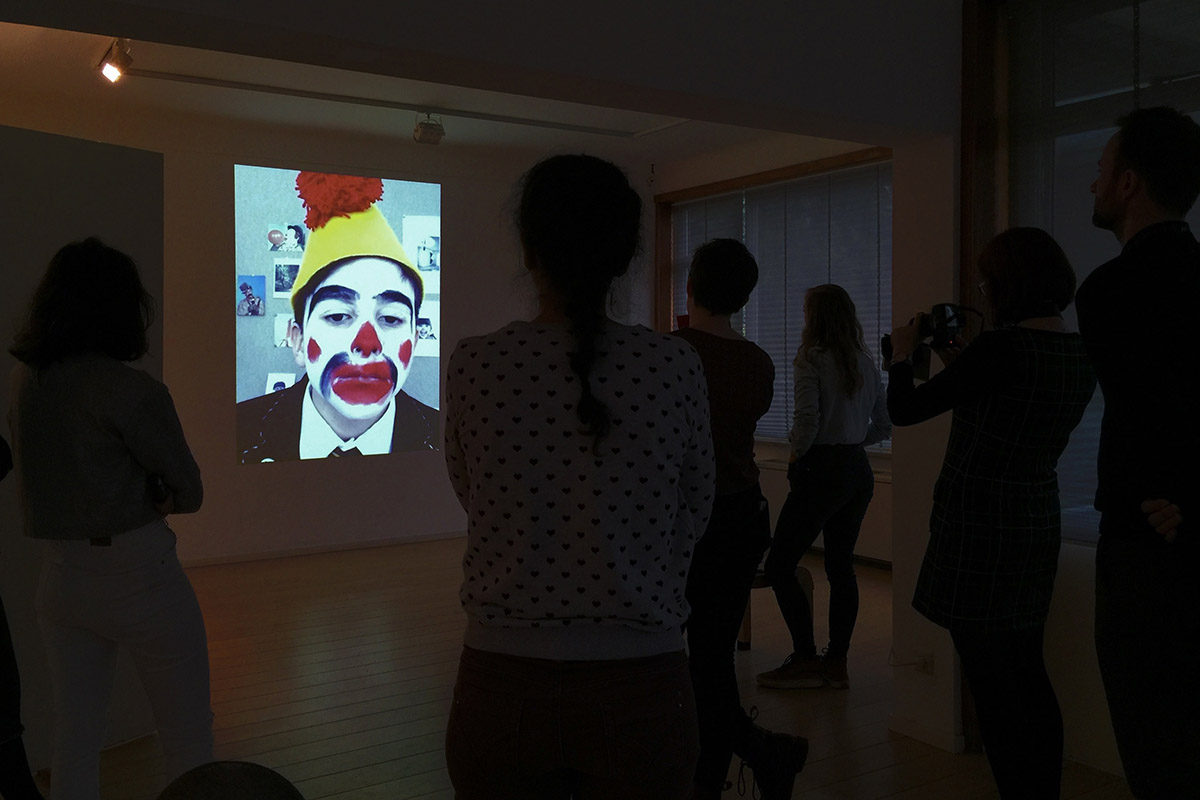
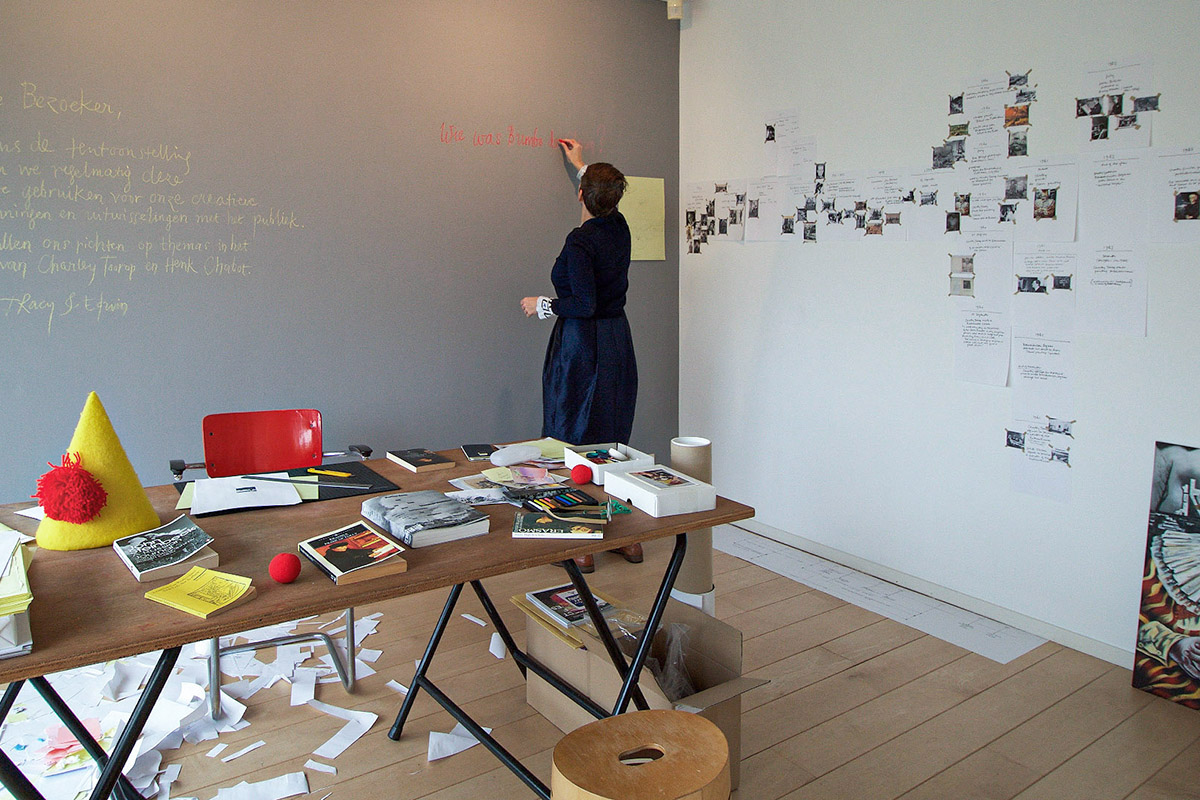

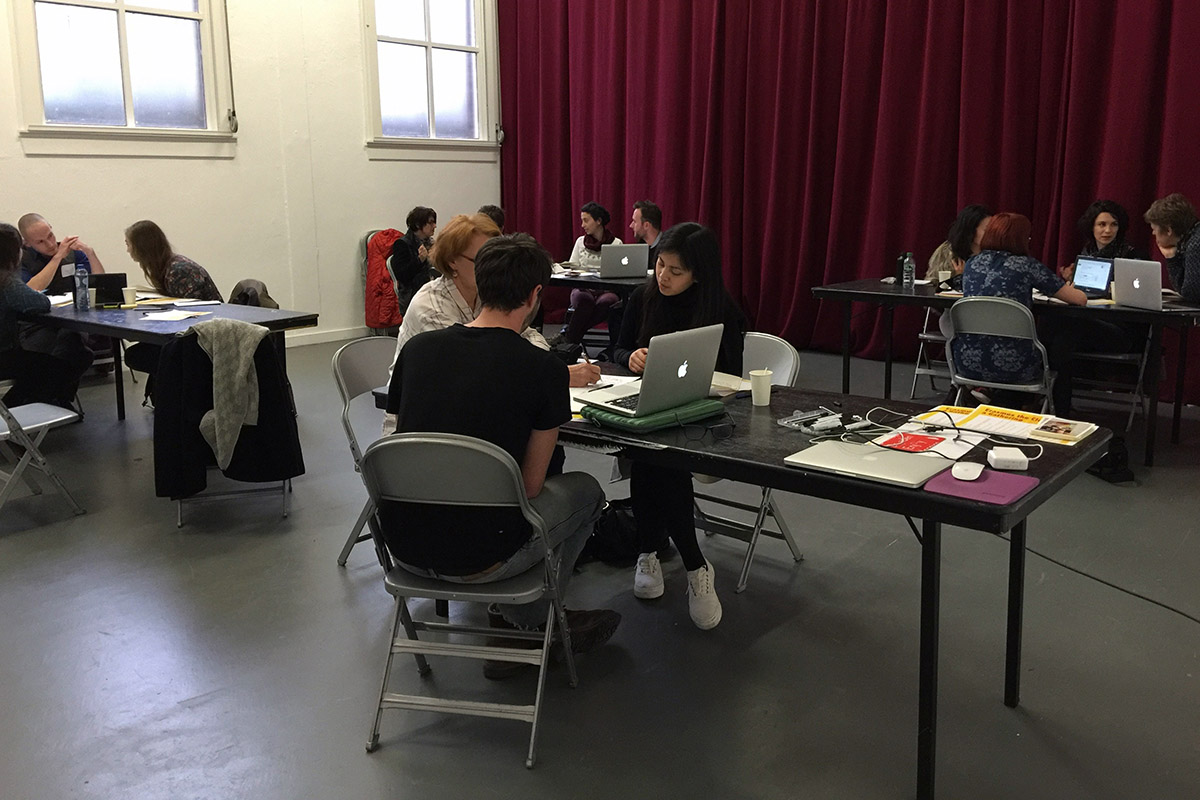
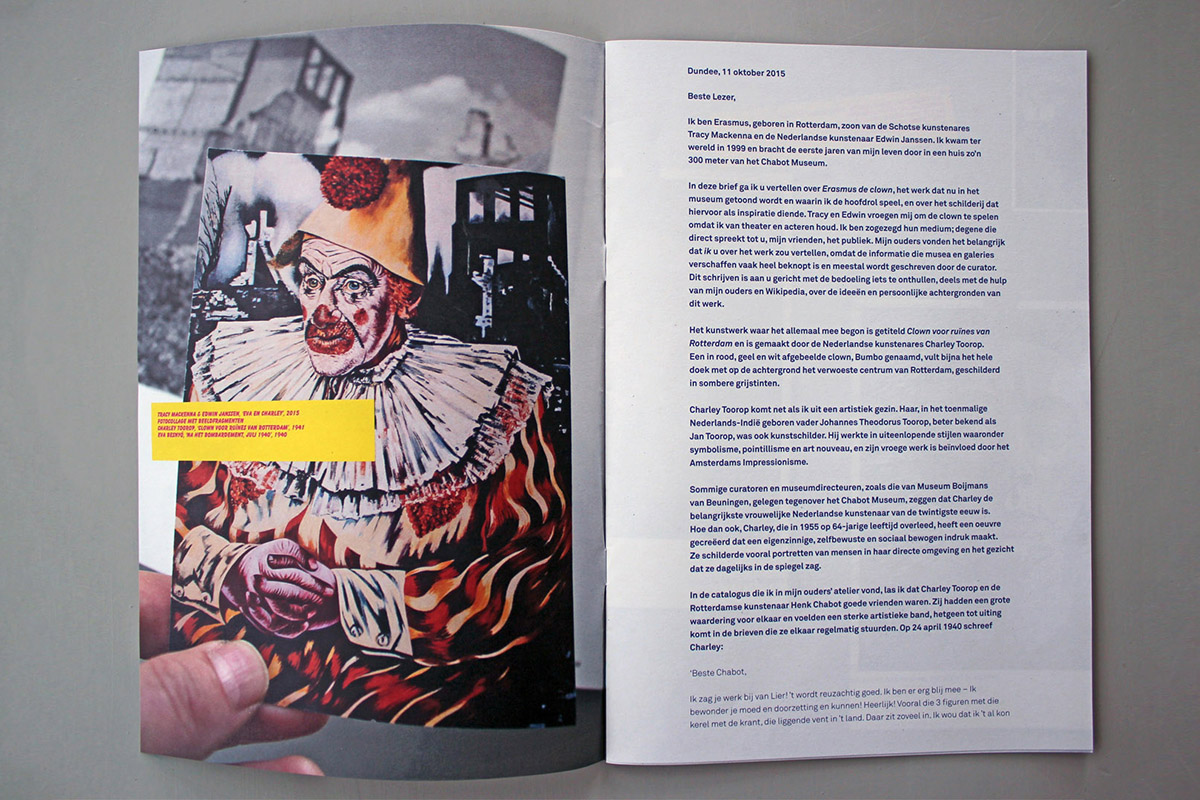
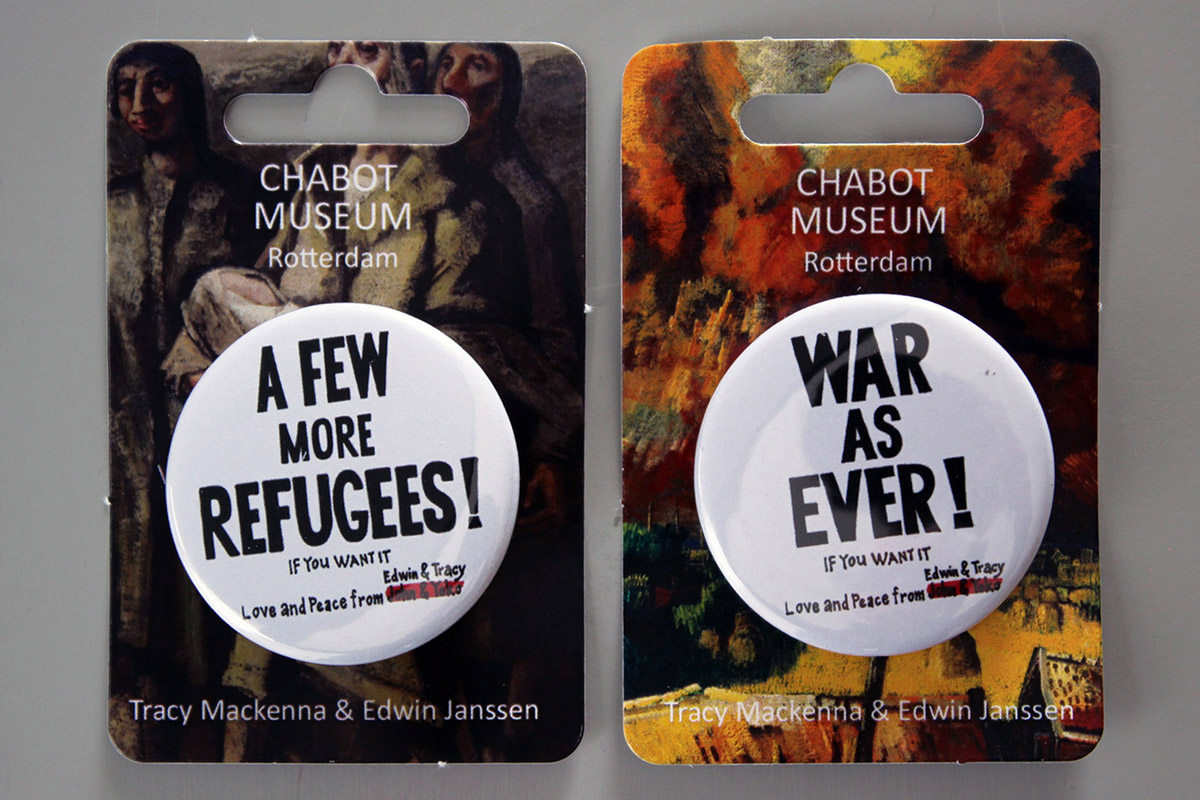
Erasmus de Clown continues Tracy & Edwin’s interests in portraiture, the representation of conflict and the space between private and public, explored through a number of artworks and exhibition projects since 1997. The main inspiration for the installation Erasmus the Clown is the painting Clown (1940 – 41) by the Dutch artist Charley Toorop (1891 – 1955).
Now hanging in the Kröller-Müller Museum in Otterlo in the Netherlands Toorop’s painting depicts a pensive clown filling almost the whole canvas, painted in red and yellow and white. The background shows Rotterdam in ruins, derived from a photograph by Charley Toorop’s daughter-in-law Eva Besnyö taken after the aerial bombardment of Rotterdam by the Luftwaffe on 14 May 1940, during the German invasion of the Netherlands. The actual clown depicted in the painting was ‘Bumbo’, a circus performer who fled to Bergen (NL) where Toorop worked and lived with her sons.
The role of the clown in the video is performed by Tracy & Edwin’s son Erasmus who was born in Rotterdam in 1999 and who is passionately involved in theatre and directing. It is also he who addresses the public in a letter that reveals the web of references that informed the making of Erasmus the Clown. This letter is printed in the form of a newspaper that was offered free to the exhibition’s visitors.
Erasmus de Clown was shown in the Chabot Museum, Rotterdam, the Netherlands, that is dedicated to the work of artist Henk Chabot. Charley Toorop was a close friend of Henk Chabot and the two artists shared many values. Erasmus de Clown’s central themes of portraiture, the representation of conflict and the space between private and public echo Henk Chabot’s concern with representation of the affliction of war, evident in the exhibition Mens, Dier, Polder that was presented in the context of Commemorative Year 2015 during which the May 1940 bombardment of Rotterdam was remembered, and freedom was celebrated.
Situated in the Chabot Museum, Tracy & Edwin’s public Visual Research Studio was a creative base for explorations around the subject of the refugee, and a meeting point where exchanges with the museum’s public took place. The research studio was also the site of investigation into the identity of Bumbo, the mysterious clown whom Toorop painted after he fled the bombarded city of Rotterdam.
An interdisciplinary event, Erasmus de Clown, a Gathering brought together international art organisations and Masters of art and curating students to explore ideas of remembrance and commemoration in art, at TENT Rotterdam and the Chabot Museum. Students worked collaboratively to develop proposals for a monument or memorial that took into consideration the cultural, social and political dimensions of imaginative new forms of art that could be publicly sited or performed.
A badge and a publication containing the letter written to the public by Erasmus de Clown were gifted to museum visitors.
Erasmus de Clown, Chabot Museum, Rotterdam, the Netherlands, 2016.
The Visual Research Studio was funded by the Royal Scottish Academy of Art and Architecture, Sir William Gillies Bequest.
Initial version, Erasmus the Clown, was presented at The Royal Scottish Academy of Art and Architecture, Edinburgh, Scotland, 2014.